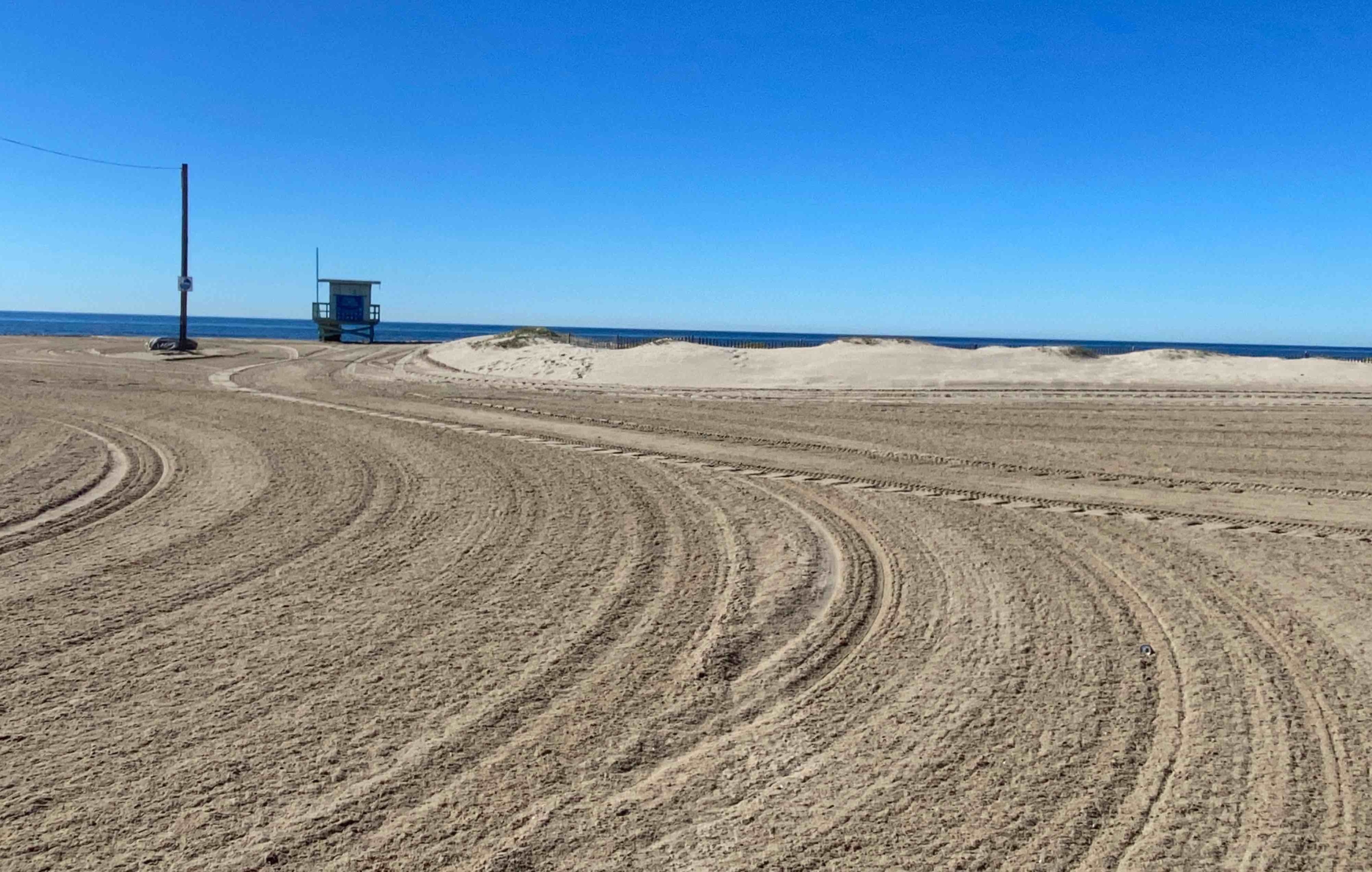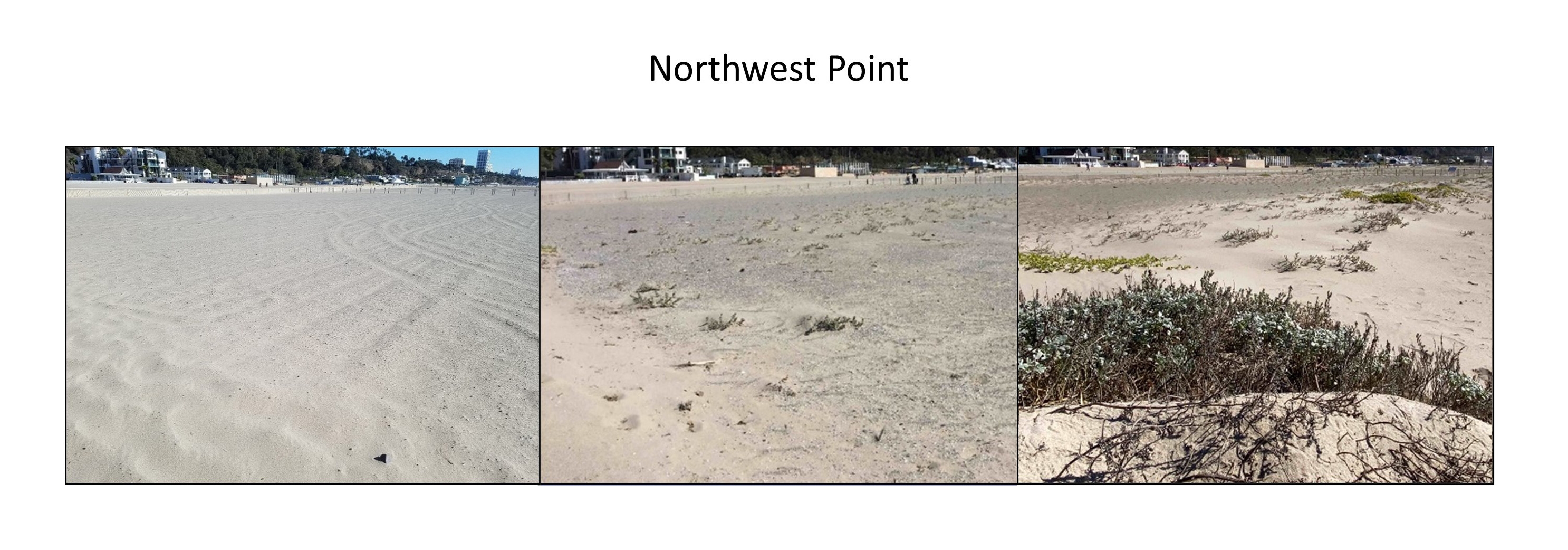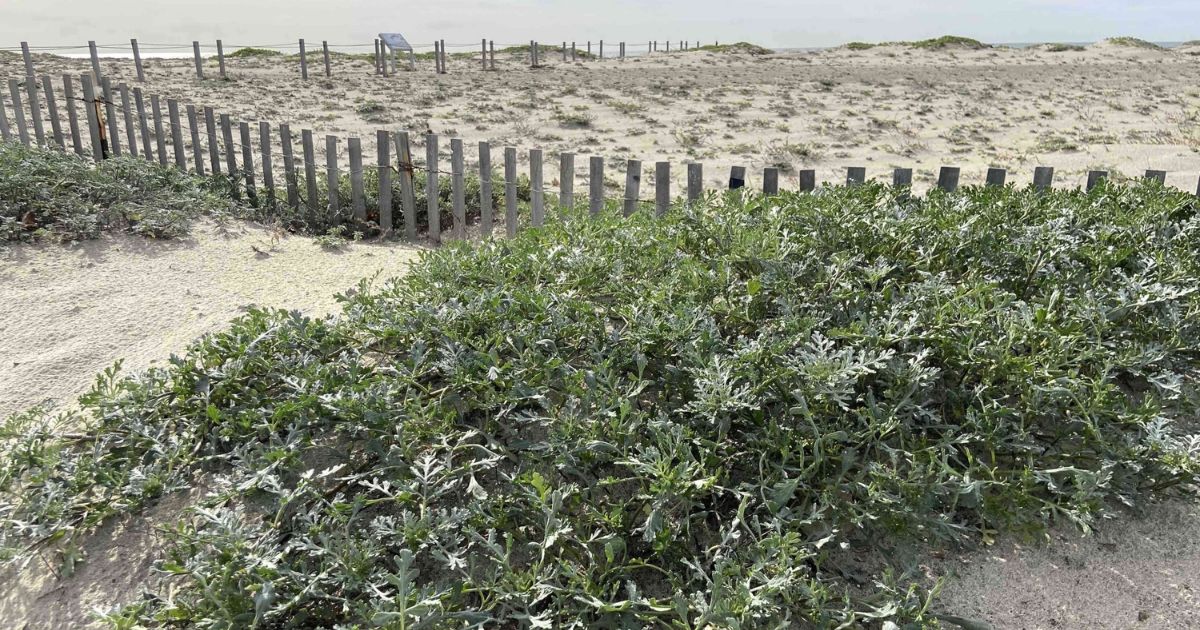Over the last several years, the residents of Santa Monica, a coastal city on the edge of Los Angeles, saw something neither they, their parents, or perhaps even their grandparents had ever seen before: a three-foot-tall dune system rising gently from the flat, groomed expanse of one of the world's most famous urban beaches.
It's a six-year alliance between sand, wind and vegetation, and, according to UC Santa Barbara researchers, it's one way to enlist nature to help protect the coast from the impacts of climate change.
"The project was really to assess whether we could naturally grow dunes on a heavily urbanized, mechanically raked beach that had been that way for more than 70 years," said Karina Johnston, a doctoral student at UCSB's Marine Science Institute (MSI) and the Bren School for Environmental Science & Management, and lead author on a paper in Frontiers in Marine Science. "Could it work? Could it inform natural solutions to help protect our coastline from sea-level rise?" The short answer: quite possibly.
The threat of sea-level rise has become an issue for all coastal cities around the world as they grapple with warming oceans, more intense storms and flooding events. For heavily populated stretches of coast, such as Santa Monica Beach in Los Angeles, the issue is especially nuanced: City planners have to walk the line between protecting the coast and keeping it available to the millions of visitors it receives each year.
"At the start of the project, considerations were centered around balancing ecology, beach access and the needs of local residents and businesses," said Shannon Parry, chief sustainability officer for the City of Santa Monica. "Given the popularity of Santa Monica Beach, the project needed to be interactive and accessible."
Beach grooming (or raking) is a coastal management measure undertaken generations ago to pick up trash, remove seaweed and make the beach more appealing for visitors.
 (Image credit: Karina Johnston)
(Image credit: Karina Johnston)
"Those management activities have been in place for decades on urban beaches, so it's created an institutionalized construct of what a beach should look like," Johnston said.
Though well-intentioned, the practice of heavily raking the top few inches of sand several times a week and picking up kelp wrack does keep the beach free of debris, but it also flattens the natural landscape of wind-swept dunes held together by natural vegetation, impacts biodiversity and reduces habitat for wildlife. These unnaturally wide stretches of sand have since become the iconic look of southern California beaches, with coastal cities spending millions of dollars each year to maintain it.
But with the growing threats of climate change and sea level rise, people who study and manage California's urban beaches are taking another look at beach grooming. In collaboration with the City of Santa Monica and The Bay Foundation and other partners, Johnston and MSI researchers Dave Hubbard and Jenifer Dugan started a long-term experiment, sectioning off three sides of a 1.2 hectare (about 3 acre) stretch of Santa Monica Beach with sand fencing, and sowing native dune plant seeds (red sand verbena, beach bur, beach salt bush and beach evening primrose). Then they waited.
And waited.
And waited, conducting scientific surveys throughout the study period, and turning to UCLA postdoctoral researcher Kyle Emery to document the long-term results via drone surveys.
"The success of the project was evident on the ground, but the aerial view from the drone provided an entirely different perspective in which the restoration site stood out like an island within a groomed landscape," Emery said. "The data we collected with the drone surveys allowed us to build digital elevation models and estimate the sand accumulation and increase in elevation of the restoration site relative to the adjacent beach." Six years after it began, the general elevation across their pilot study area increased by about 0.3 meter (about 1 foot), including a higher foredune ridge with a 0.9-m maximum elevation and 1-m dunes along the perimeter. The accumulation of sand into dune forms was assisted by native vegetation, which trapped sand as it blew into the area, forming hummocks and dunes.
 The evolution of the landscape at the start of the project in 2017 (left) in 2018 (middle) and in 2022 (right) (Image credit: UC Santa Barbara)
The evolution of the landscape at the start of the project in 2017 (left) in 2018 (middle) and in 2022 (right) (Image credit: UC Santa Barbara)
Humans weren't the only ones who noticed the new landforms; shorebirds, and especially the threatened western snowy plover, had started to make use of the new dune landscape to roost.
Waiting for nature and conducting scientific research was probably the easier job. The collaborators simultaneously undertook a massive information campaign aimed at the local beach community, explaining what the project was for and what they could expect.



